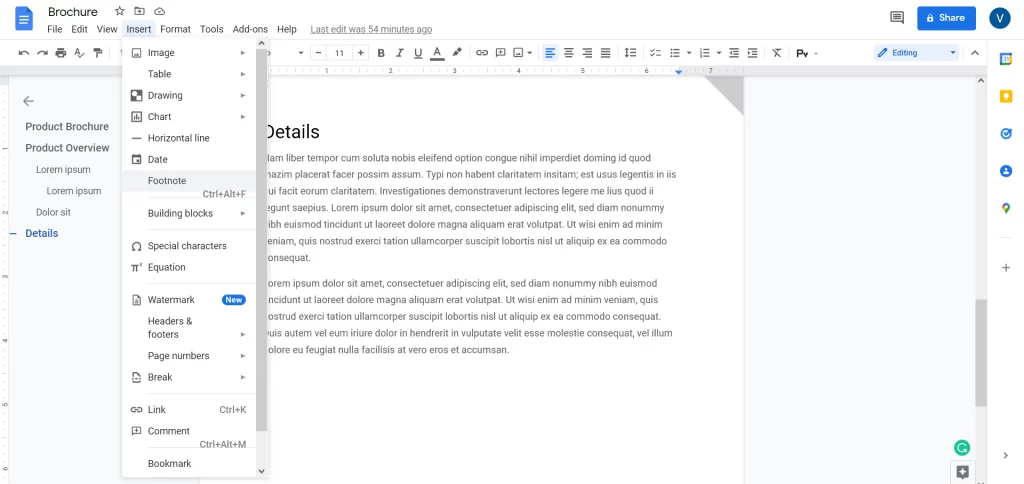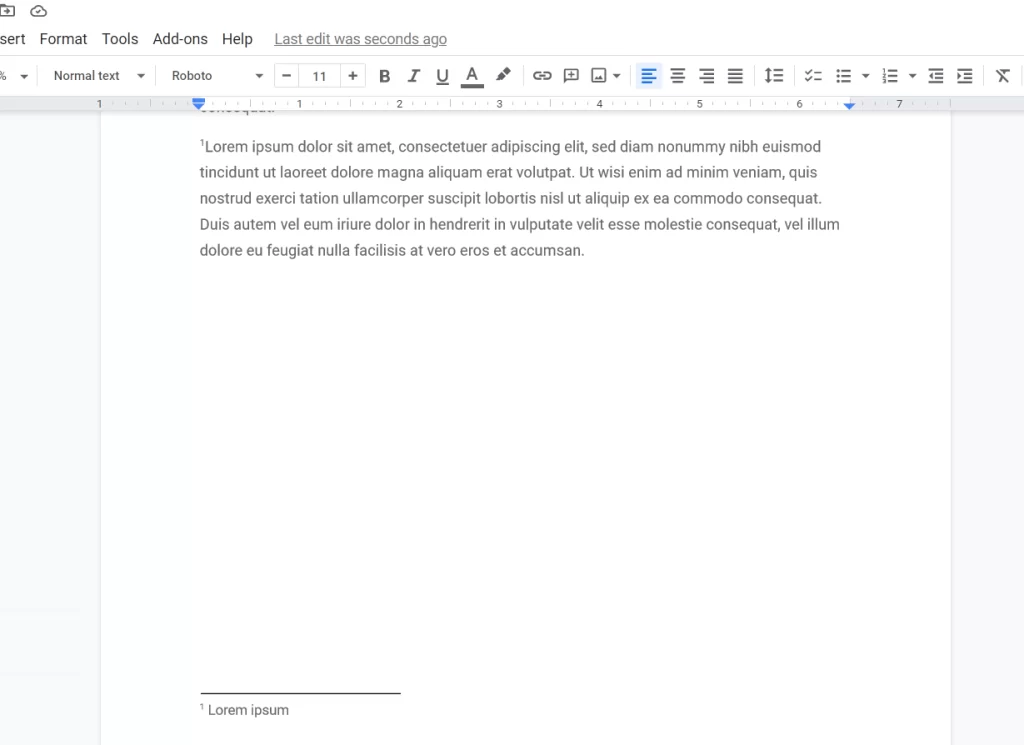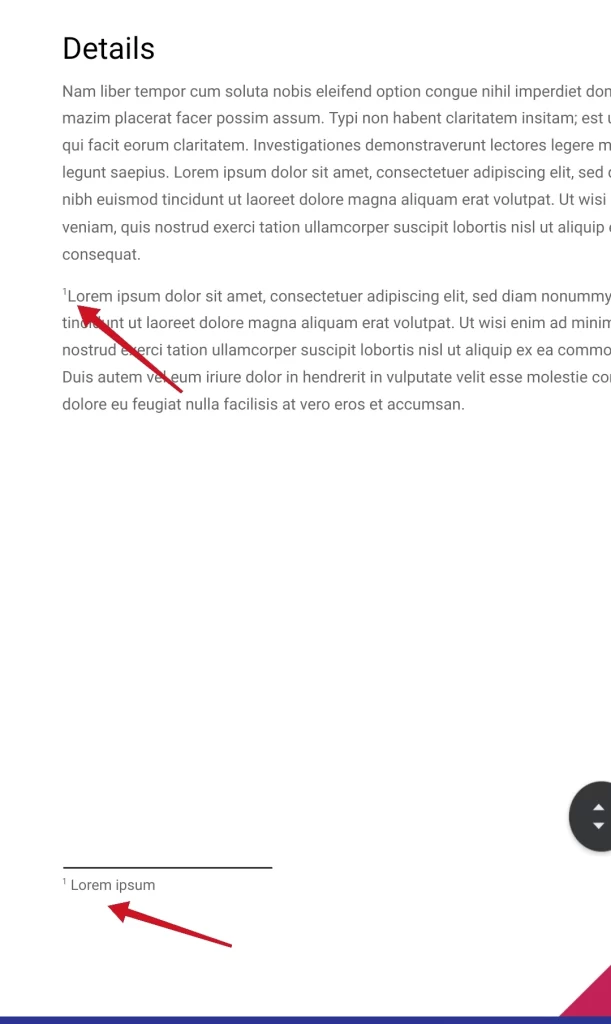In the process of creating a text document, you may need to use footnotes to explain the meaning of certain words or terms. Google Docs also offers you this great feature.
What do you need to add footnotes in Google Docs
Google Docs has been popular among word processing users for a long time and may very well overtake Microsoft Word soon. The main advantage of Google Docs is that this service is very easy to use, and also completely free, although it has all the same features as Word.
The only disadvantage is that you constantly need the Internet to work with documents so that there’s an opportunity to automatically save them to the cloud. However, this is unlikely to be a problem, given that almost everyone now has an uninterrupted connection to the global network. In addition, you can always save the finished document to the memory of your PC, laptop, or mobile device. What’s more, you can do it in any format you like, both in PDF and DOCX.
While you’re creating a text document, you may need to use footnotes to explain the meaning of certain words or terms. Footnotes are especially often needed when writing essays, reports, research papers, or theses.
They can help you provide useful context for what you want to convey and demonstrate your work by giving the reader access and insight into the time you spent researching and putting together various complex information.
Nevertheless, you should know that adding footnotes isn’t that difficult, and you shouldn’t be afraid of it, because the text will look really interesting. In general, the most useful footnotes don’t just indicate where the information in the text is taken from, but also provide a link for quick access.
Well, if you want to add footnotes to your Google Docs document, here’s how you can do it.
How to add footnotes in the Google Docs web version
If you want to add footnotes in the Google Docs web version, you have to follow these steps:
- First of all, open your Google Docs document you want to edit.
- Then, place your cursor at the point in the document where you want to add a footnote.
- After that, click on the “Insert” tab and select “Footnote”. You can also use the “Ctrl + Alt + F” key combination on Windows or “Command + Option + F” on Mac to add footnotes.

- The document will automatically add a superscript number where you place the cursor, and a footnote at the bottom of the page along with the endnote line.

- Finally, just enter the text you want in the footnote and format it, if necessary.
Once you have completed these steps, you will add a footnote to your Google Docs document.
How to add a footnote in the Google Docs mobile app
If you want to add a footnote in your Google Docs document on your mobile device, you have to follow these steps:
- At first, open the Google Docs app on your mobile device and go to the document you want to edit.
- Then, start editing by tapping on the pencil icon and tap on the “+” icon to open the list of options.

- After that, scroll down and select “Footnote”.

- Finally, enter the text you want in the footnote.
Once you have completed these steps, you will add a footnote to your Google Docs document.
Why do you need footnotes
To begin with, footnotes come in many forms. Some authors like to use them to provide the reader with additional information that they don’t consider necessary to include in the main text of the book. In particularly bad cases, one footnote can be several pages long, and the total volume of all footnotes exceeds the volume of the main text.
In the vast majority of cases, however, a footnote is used to cite the source of information. A footnote is obligatory when the author cites a quotation or opinion of a colleague; often when figures are cited; often when some new (or controversial) fact is mentioned. There are no absolutely clear rules as to when a footnote should be placed.
So, first, let’s refute two major misconceptions about footnotes:
- The presence of a footnote is NOT a guarantee of the truth of a statement.
- The presence in a book of footnotes (the so-called “scientific apparatus”), as well as their number is NOT a guarantee of the quality of the work. The technique of “stuffing more footnotes to make it look more solid” has been known for a long time.
A reference to the source of the information is necessary to show where the author got the information from. Roughly speaking, to confirm that he didn’t make it up. A footnote allows you to check this information if necessary. It’s not and cannot be a guarantee of the truth.
Of course, not very conscientious authors have developed a bunch of tricks to mislead even the sophisticated reader. One option is the so-called “borrowed footnotes”. This is a situation where the author, for example, himself wasn’t in the archive but takes the footnotes to the archival materials from the monograph of a more diligent colleague. Nevertheless, the attention paid to the footnotes can pay off a hundredfold.




